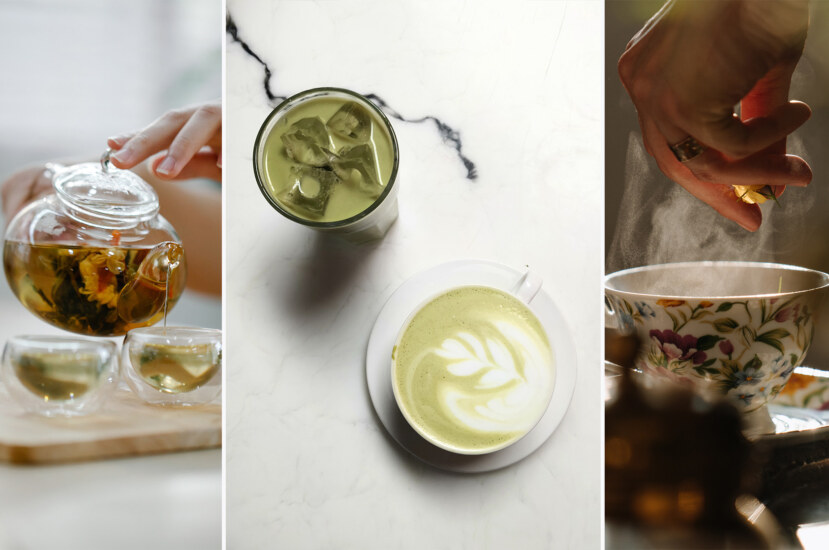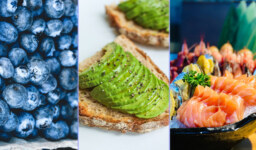Tea is one of the most popular beverages consumed all around the world. There are many types of tea produced in different ways.
Green Tea
To put it simply, tea leaves seem green. After being plucked from the plant, green tea leaves are first “fired” to preserve their green color. “Firing” will stop oxidation in its tracks. The natural chemical process of oxidation also causes an apple to become brown after being sliced open. This is the process that transforms new tea leaves into black tea. To counteract the enzymes that promote oxidation, tea is “fired” by exposing the tea leaves to intense heat for a limited period. Green tea is the sole form of tea that goes through the firing process as the initial stage. Other varieties of teas also go through it.

Types Of Tea Produced Around The World.; Green Tea
Green tea often has a light body, slight astringency, and a vegetal or grassy flavor in the cup. However, these qualities will vary depending on the specific variety. Although it is sometimes stated that green tea has less caffeine than black tea. But this is not entirely true. It is typically advised to steep green tea for shorter periods and at lower temperatures than black tea because of its propensity to become bitter and astringent. This milder steeping method results in less caffeine in your cup. The same amount of caffeine will be present in a cup of green tea that has been brewed similarly to a cup of black tea.
Oolong
Oolong is a semi-oxidized tea whose characteristics can change according to the type of leaf, the degree of oxidation, the color, and the roasting level. It is one of the most complicated types in terms of manufacturing. Also, it may take on a broad range of flavors and fragrances.
Their hues can range from light green or yellow to dark orange. Moreover, they frequently have undertones of spices, melons, apricots, wood, and orchids in their scents. Oxidation levels can range from 10% to 80%. Less oxidized kinds resemble green teas, while more oxidized varieties have more in common with black teas.

Types Of Tea Produced Around The World.; Oolong
Originating in China, most likely in the Wuyi Mountains, is oolong. Even while China is still the largest producer, Taiwan also grows a sizable amount of oolong. Taiwanese varietals often have lower levels of oxidation. The two main types of oolong tea are those with long, strip-style curls and those with short, wrap-style curls.
Darker oolong teas typically match well with smoked or cured meat and sweets. Further, the lighter-oxidized varieties can be combined with lighter foods and fish.
Fermented and aged tea
Many traditional teas must be matured for several months, years, or even decades before consumption. While green teas & lighter oolongs are best consumed fresh. However, Fermenting may bring out new nuances in several white, black, and oolong varieties. Due to processing techniques that don’t entirely eradicate the tiny organisms that are naturally present in tea leaves, certain teas experience bacterial and fungal activity during the aging process. These teas are fermented even though they don’t produce alcohol or lactic acids like fermenting beer or pickles does. At the auction, some renowned vintages fetch hundreds of dollars per pound.

Types Of Tea Produced Around The World.; Fermented and aged tea
Pu-erh, the most well-known of these fermented teas, is produced in the Yunnan Province of China. Also, in the neighboring nations of Laos, Thailand, and Vietnam. This tea appears purely green at first. But as it ages, the grassy tastes are replaced with the rich depth of varnished wood, worn leather, and mellow earthiness. Similar steps are followed when making liu an. It is aged in tiny bamboo baskets lined with tea-brewing bamboo leaves. Be aware that this is not the same as Burmese fermented tea leaves, which are not utilized for tea but rather Lacto-fermenting before being mixed into salads.
Black Tea
Black tea is made from tea leaves that have undergone swift and intense oxidation. The flavor and scent of the leaf are dramatically altered, giving it a black look. Enzymes within the leaf initiate oxidation, a natural chemical process, as soon as they are exposed to air. Black tea is the only type of tea that is distinguished by having had a significant amount of oxidation, even though all teas (except green tea) undergo some degree of oxidation.

Types Of Tea Produced Around The World.; Black Tea
Black tea was first produced in China. But due to its popularity in the West, the majority of it is now exported. Former British colonies, namely India, Sri Lanka, and Kenya produce nearly entirely black tea in a way that caters to Western preferences and uses. As a result, the flavor profile frequently emphasizes a robust, brisk, full-bodied cup with varied levels of fruitiness or maltiness. However, there is no single flavor of black tea due to the significant differences created by regional cultures. It’s also the most popular tea for combining with other ingredients to create traditional drinks like masala chai or earl grey.
Black teas are commonly cited as having the highest caffeine content. However, this is only true since it is usual to steep black tea for up to five or six minutes using water that has been heated to a full boil. Any tea prepared in this manner will yield a significant amount of caffeine.
Matcha
Chinese green tea variation known as matcha is distinctive for the way it is harvested, processed, and prepared. It is typical that three to four weeks before harvest, the bush Camellia sinensis is covered. To avoid direct sunlight, the leaves of the plant are covered to enable them to develop in the shade and not in direct sunlight. The leaves are gathered, separated from their stems and veins, and powdered into a fine powder that looks like silk. Although matcha was created in China, Japan has only lately begun to embrace the matcha-making process.

Types Of Tea Produced Around The World.; Matcha
Contrary to other types of tea, this type of tea is usually powdered, unlike other types of tea. For the powder to be consumed, it is often mixed with liquids, such as water or milk, in a wet or dry environment. Due to its unique method of harvesting, matcha tea also tends to have more theanine and caffeine than other forms of tea. Matcha has been cooked and consumed in several ways throughout history. In addition, it is believed that Chinese Zen Buddhist monks developed it for the first time between the ninth and tenth centuries.
Even the name is Japanese in origin and loosely translates to mean “a rubbed or ground tea.” Matcha powder is currently often employed in the making of savory and sweet meals, as well as drinks, in addition to its employment in ceremonies. Rice, fish, and dessert all go well with matcha tea. It should be emphasized that matcha used in ceremonies and meant for drinking will often be of higher quality than matcha utilized in culinary applications.
White Tea
Chinese tea falls within the group of white tea, which has a hazy categorization. However, compared to black or green tea kinds, this cultivar is typically thought to be paler in color. Also, it has a more delicate flavor. The tea plant (Camellia sinensis), which produces white tea, is collected when the leaves are still closed and the buds are coated with delicate white hairs, which is how the tea got its name. White tea is typically either not oxidized at all or rather faintly oxidized, which helps to maintain its delicate flavor. When tea is prepared, it often has a light straw color, a delicate sweetness, and delicate scents and tastes.

Types Of Tea Produced Around The World.; White Tea
White tea is said to have originated in Fujian, where the most well-known Chinese white tea Silver Needle is currently made. However, this is not definite. White tea often costs more than green or black tea kinds because it must be hand-picked and produced slowly.
White tea shouldn’t ever be consumed with fatty or spicy foods. Its delicate flavor pairs well with mild cheese kinds, delicately sweet desserts, light salads, and fish meals, while it can also be enjoyed as a sip before or in between courses.


